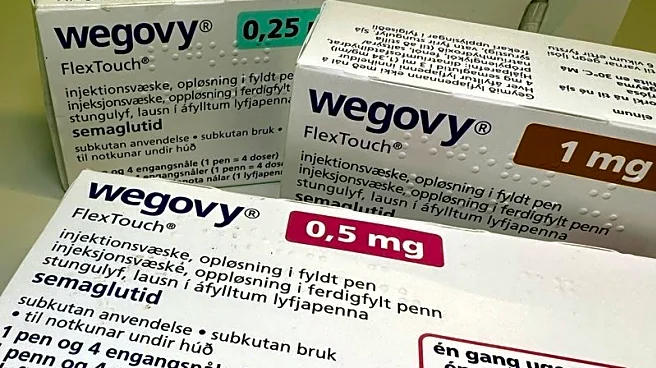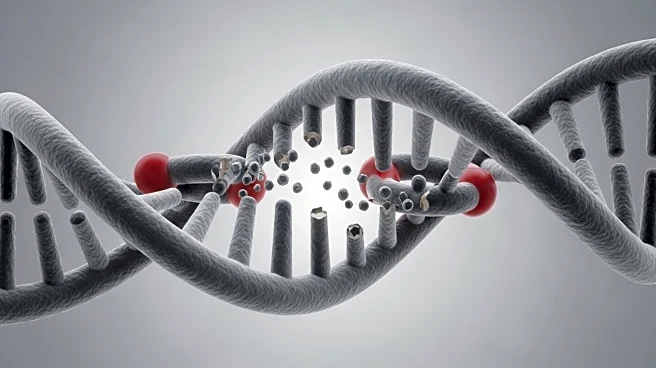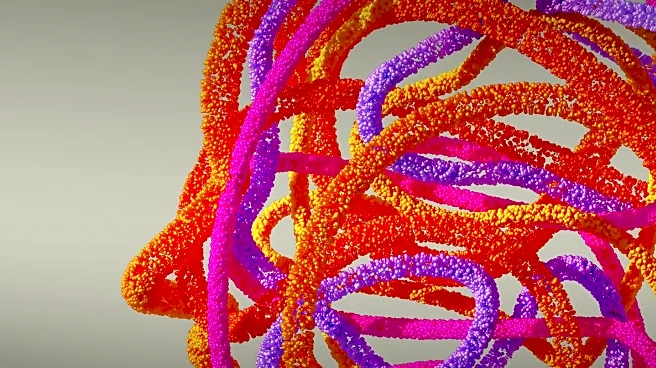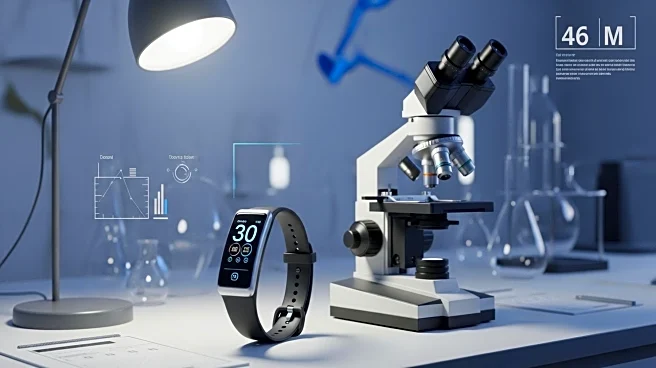What is the story about?
What's Happening?
The adeno-associated virus (AAV) vector market is experiencing significant growth, driven by advancements in gene therapy. As of 2024, the market was valued at USD 1.4 billion and is projected to reach USD 4 billion by 2034, with a compound annual growth rate (CAGR) of 12%. This growth is fueled by increasing approvals of AAV-based gene therapies, a rising prevalence of genetic disorders, and expanding research and development funding. Key players in the market include Regenxbio, Sarepta Therapeutics, Spark Therapeutics (Roche), Novartis, UniQure, Voyager Therapeutics, and Pfizer. The market is segmented by product type, application, end user, technology, and distribution channel, with North America holding the largest market share due to FDA approvals and a strong pipeline of clinical trials.
Why It's Important?
The expansion of the AAV vector market is crucial for the biotechnology sector, particularly in the development of gene therapies for genetic disorders and rare diseases. The increasing use of AAV vectors in vaccine development and the growing number of biotech-pharma collaborations highlight the market's potential to transform treatment landscapes. However, challenges such as high manufacturing costs, scalability issues, and regulatory complexities remain. The market's growth is expected to benefit pharmaceutical companies, research institutes, and ultimately patients who require innovative treatments for previously untreatable conditions.
What's Next?
The AAV vector market is poised for further expansion, with North America leading the way and Asia-Pacific expected to record the highest growth rate. Companies are likely to focus on overcoming manufacturing and regulatory challenges to meet commercial demand. The development of next-generation AAV serotypes and the expansion of contract development and manufacturing organizations (CDMOs) are anticipated to support this growth. Additionally, the adoption of artificial intelligence in gene therapy research and vector optimization could drive further advancements in the field.
Beyond the Headlines
The rise of AAV vectors in gene therapy not only represents a technological advancement but also raises ethical and regulatory considerations. As these therapies become more prevalent, questions about accessibility, affordability, and long-term effects will need to be addressed. The collaboration between biotech firms and academic institutions may also lead to new ethical guidelines and standards in the industry.
AI Generated Content
Do you find this article useful?














